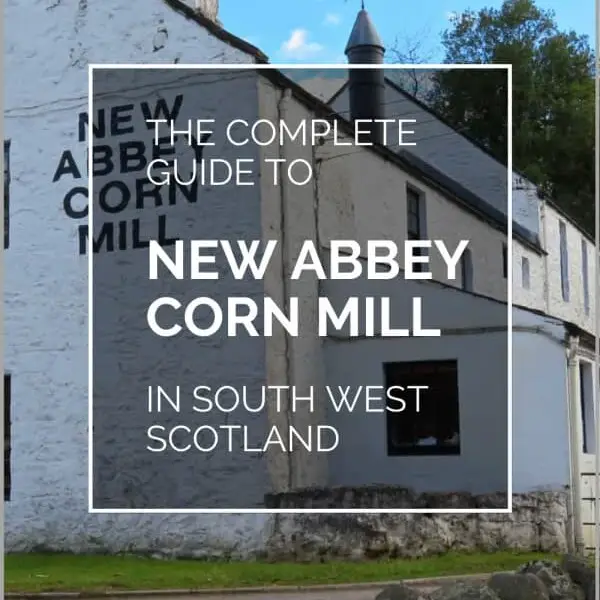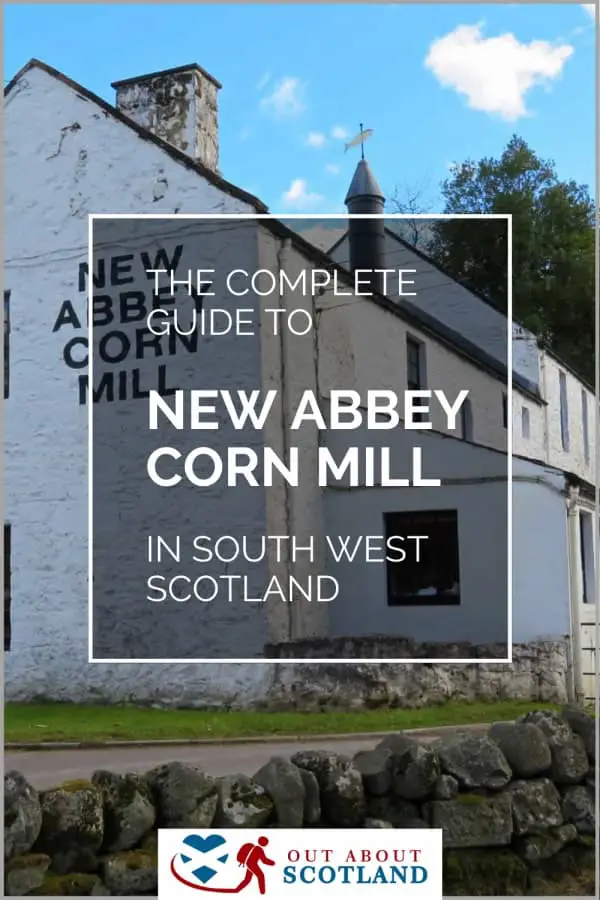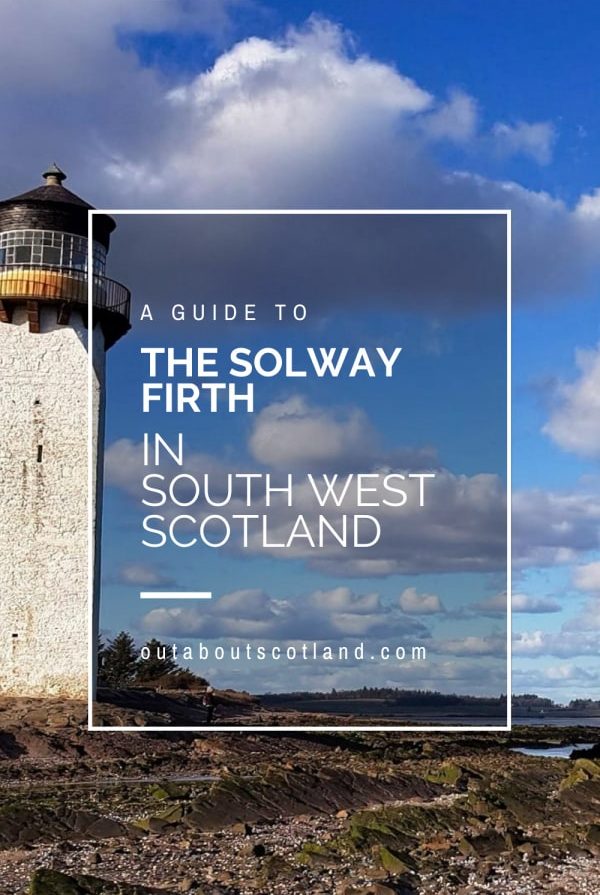The 18th-century New Abbey Corn Mill in Dumfries & Galloway is one of the few mills in Scotland that still uses a water wheel to operate oat-grinding machinery. Historic Environment Scotland is in charge of managing the mill, which is accessible for self-guided tours. Discover what it’s like to visit the historic attraction in this guide.
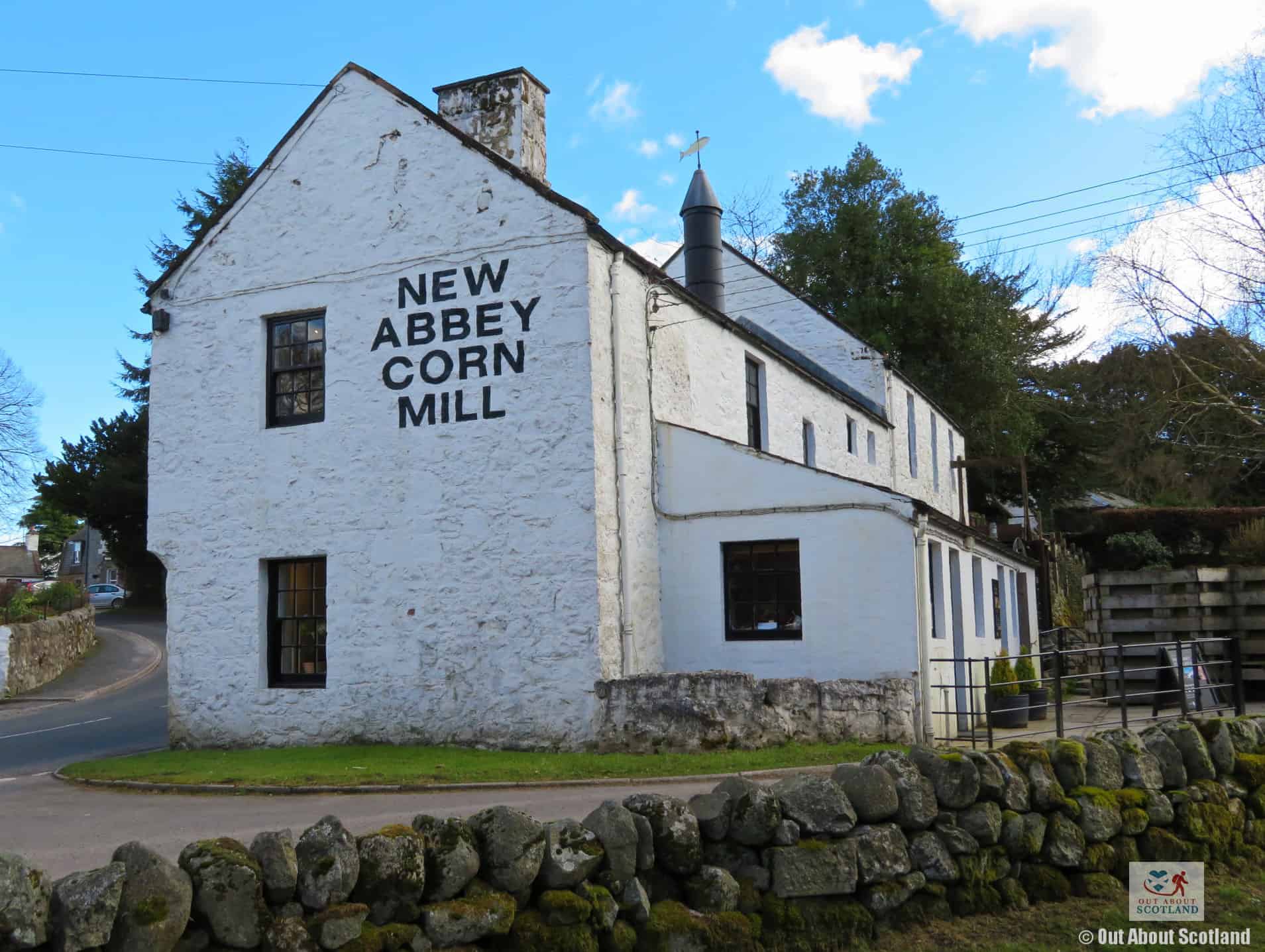
| Address: | New Abbey, Dumfries, DG2 8BX |
| Opening Hours: | 19 Apr to 30 Sept: daily,10 am to 5 pm, last entry 4.30 pm 1 Oct to 18 Apr: daily except Thur & Fri, 10 am to 4 pm, last entry 3.30 pm |
| Admission Price: | Adult (16-64yrs) £7.00 Concession (65yrs+ and unemployed) £5.50 Child (5-15yrs) £4.00 Family (1 adult, 2 children) £14.00 Family (2 adults, 2 children) £20.00 Family (2 adults, 3 children) £24.00 |
| Parking: | Free car park on-site |
| Contact: | 01387 850260 |
| Facilities: | Gift shop, guided tours, water refill |
Overview
The New Abbey Corn Mill, situated in the lovely village of New Abbey in Dumfries and Galloway, offers a glimpse into the history of Scotland’s ancient grain milling craft with a complete working set of original milling machinery.
Although the last miller left this small whitewashed building over 65 years ago, visitors can still see the huge wooden water wheel in action, spun by the power of the river that flows nearby as it rotates the grinding wheels that turn grain into one of the nation’s staple foods, oatmeal.
It’s thought that there may have been a mill at this location as far back as the 1200s, but the mill house we can visit today was built in the 1700s as Scotland’s advancing agriculture industry saw ever-increasing crop yields. Up until 1948, the mill continued to produce oatmeal, after which Historic Environment Scotland acquired ownership to preserve this still-functioning piece of Scotland’s industrial history.
This is a nice wee attraction midway between Dumfries and The Solway Firth that’s a bit of a time capsule, and while it won’t take you long to walk around it, you’ll get an interesting glimpse into the miller’s long-lost craft during a visit.
As a tourist attraction, the New Abbey Corn Mill is a hidden gem that’s different from the usual castles that Historic Environment Scotland looks after, and it’s notable as much for the surrounding countryside as the mill itself.
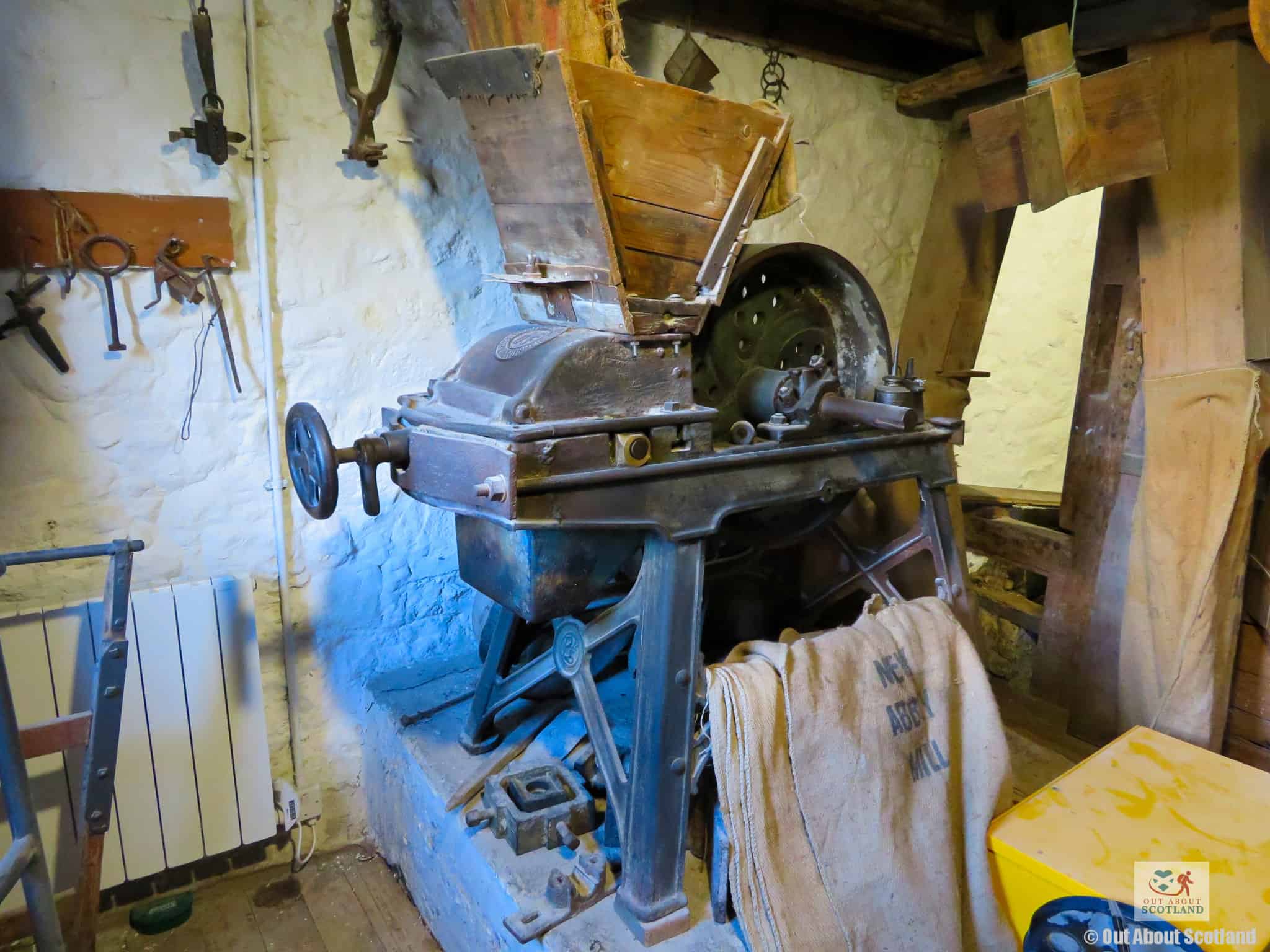
The Highlights
1: The New Abbey Corn Mill, nestled in the quaint village of New Abbey, is a beautifully preserved example of an 18th-century water-powered mill that offers a fascinating insight into Scotland’s agricultural and industrial past. The mill, still in working condition, provides a unique opportunity to witness the traditional method of oatmeal production.
2: One of the major highlights of the mill is the live demonstrations. Visitors can watch the entire milling process from start to finish and even participate in some parts of it. This hands-on experience provides an immersive understanding of how corn was ground into flour in the olden days, making it an educational visit, especially for children.
3: The nearby Sweetheart Abbey and the charming village with its traditional stone cottages add to the overall appeal of a visit. The abbey is free, though visitors should be aware that it’s in ruin and therefore exposed to the weather.
Visiting Tips
1: When the water wheel isn’t turning you’re shown a video instead, which is quite interesting but not exactly a Holywood blockbuster. Get there between 12 p.m. and 3 p.m. from April 1 to September 30 if you’d rather see the wheel in action.
2: The wooden steps between levels in the old mill are rather steep so bear that in mind if you have trouble climbing stairs.
3: If you’d like to see more attractions in the area I recommend combining a visit to the mill with nearby Caerlaverock Castle or heading a few miles south to Southerness Beach.
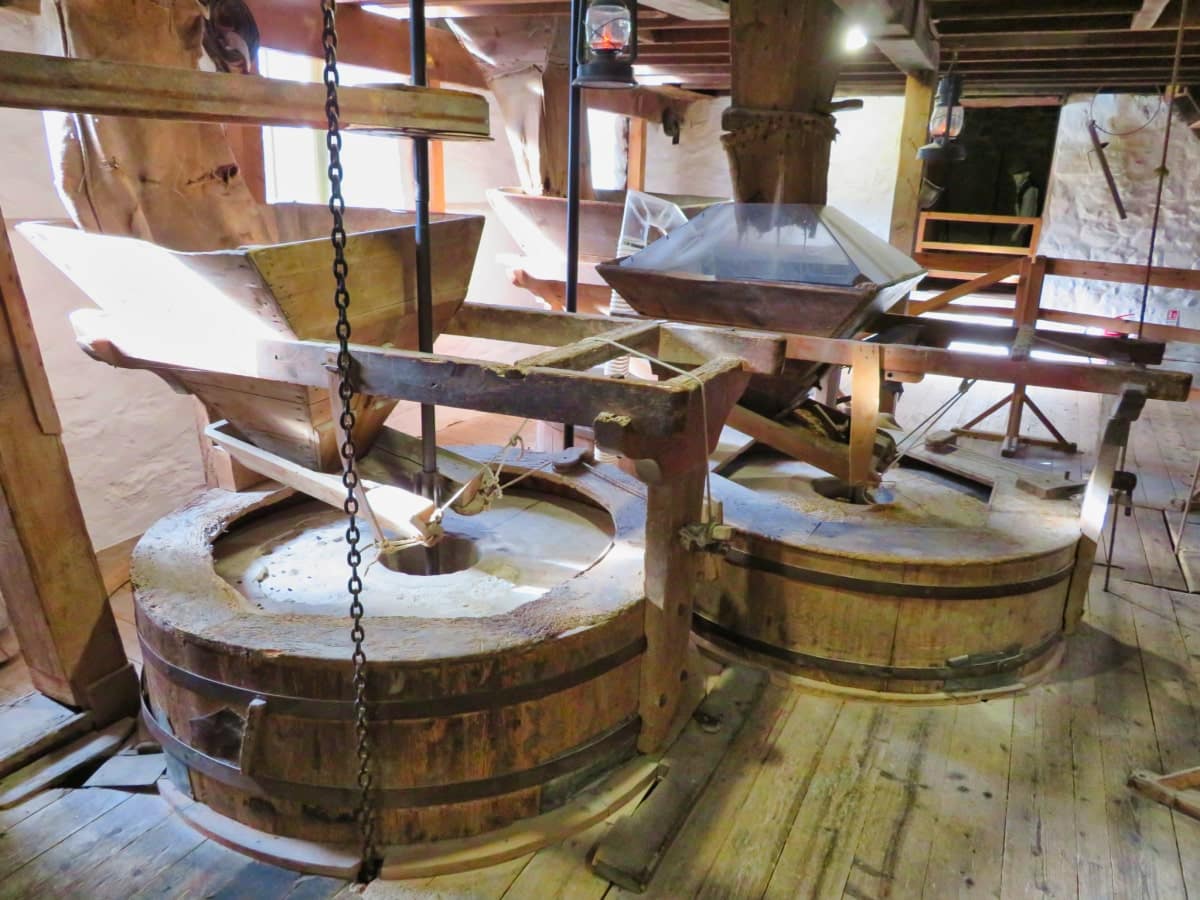
Tourist Information
Although the New Abbey Mill was built towards the end of the 18th century, it’s believed that a mill of some kind existed there as far back as the late 13th century when Cistercian monks established Sweetheart Abbey at the far end of the village, hence the mill’s alternative name, Monks Mill.
Visitors to New Abbey Corn Mill can take a trip back in time throughout the year, but it really comes alive between April and September. During these months, the water wheel is activated and the original grinding, turning, and sifting machinery shudders into action to produce oatmeal from the three massive grinding stones on the middle floor.
At the start of your self-guided tour you’ll be greeted by one of the HES staff who will tell you about the history of the mill, and you can then take a look at the rotating water wheel on the outside before moving into the mill house. The original milling machinery can be seen across three floors that are filled with the smells of oiled metal and the sounds of creaking wood, which really help to bring the place back to life.
Be aware that the stairs are quite steep and narrow, so anyone with mobility issues might want to stick to the lower level. Another thing to be aware of is that when the water supply is low, the wheel is deactivated, but at least you can watch a short video that shows how the mill machinery operated over the last 200+ years.
This isn’t exactly the biggest attraction on Historic Environment Scotland’s roster, so after your visit I recommend taking a walk up the road to HES’s larger site in the village, the 700-year-old Sweetheart Abbey which has a collection of ornate stone carvings and headstones in its graveyard.
You’ll also find Dumfries just 20 minutes away by car which has severeal historic attractions (Robert Burns House is worth a visit), while the lovely Solway Firth coastline is just 10 minutes in the opposite direction.
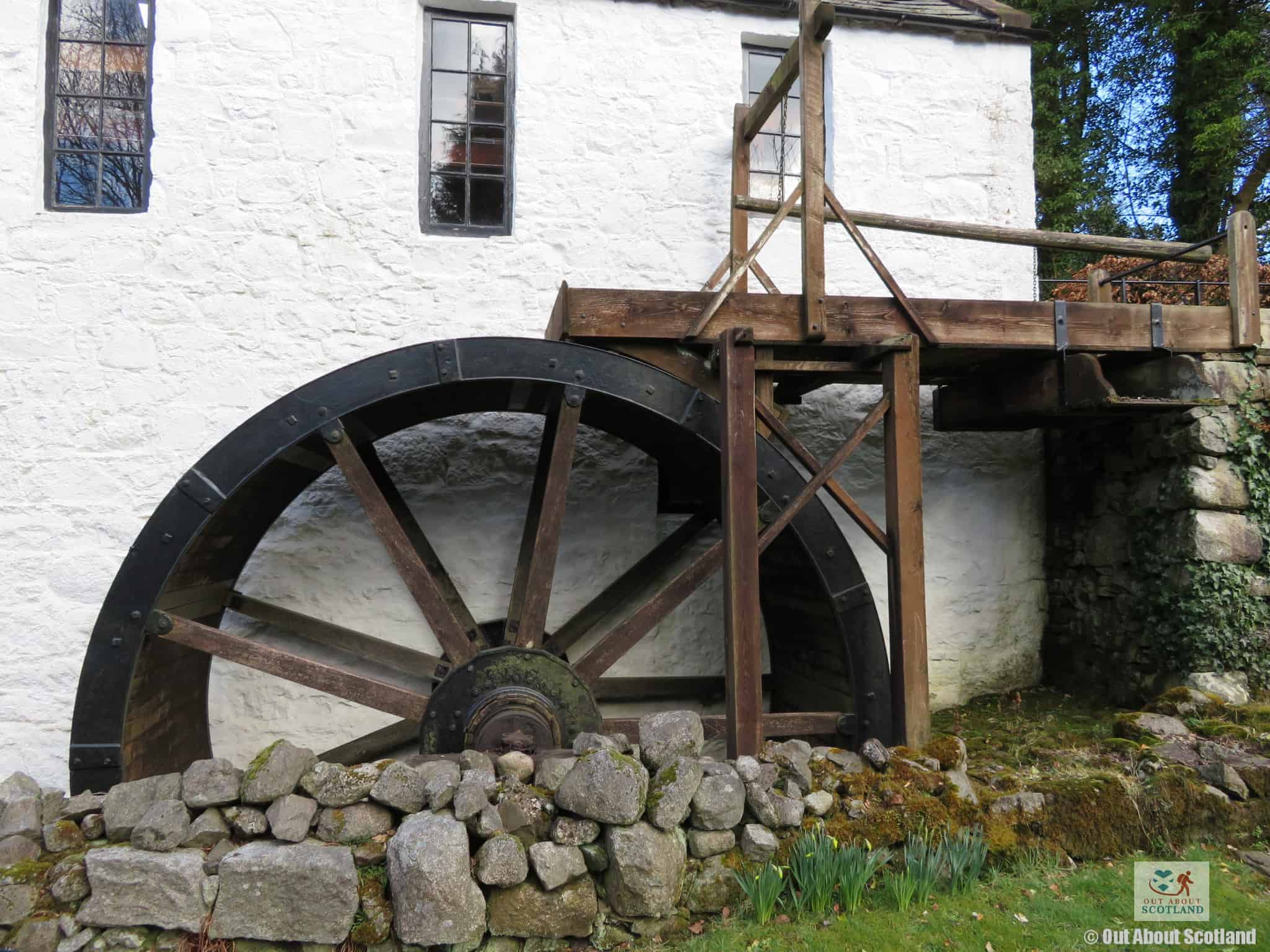
Things to Do
Explore History: Take a journey back in time at the New Abbey Corn Mill. This fully restored, 18th-century mill offers a fascinating insight into Scotland’s rural history. Watch the ancient machinery spring into action and turn the water wheel just as it did hundreds of years ago. The knowledgeable staff are always on hand to answer any questions you might have about the mill’s history and inner workings.
Guided Tours: Embark on a guided tour of the mill and its surroundings. Expert guides will share captivating stories and facts about the mill’s history, its importance to the local community, and the process of corn milling.
Explore the Village of New Abbey: The mill is nestled in the quaint village of New Abbey. Wander around the village, enjoy the countryside, and visit other local attractions such as the 13th-century Sweetheart Abbey.
Nature walks: There are picturesque forests, fields, and hills all around the mill. Embark on a nature walk around the mill’s grounds, or perhaps venture to the nearby Waterloo Monument (address: Dumfries, DG2 8DT).
Photography: The New Abbey Corn Mill makes a great setting for photography. From the ancient milling machinery to the old miller’s house, there are plenty of subjects to capture on camera.
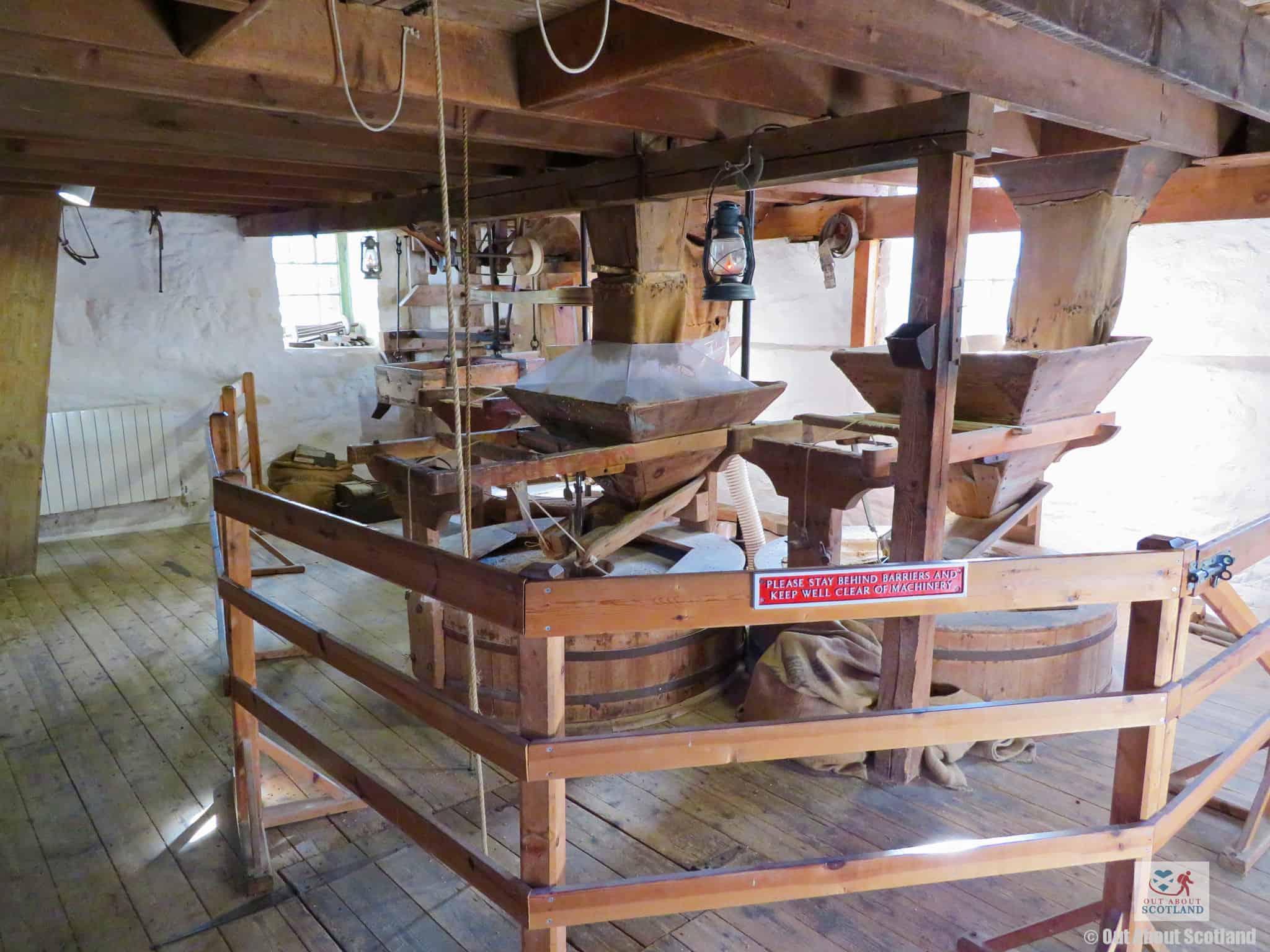
Things to Do Nearby
Caerlaverock Castle. Castle Road End, Dumfries DG1 4RU. 27-minute drive.
A medieval castle with an unusual triangular shape. It is one of the few remaining castles in Scotland that still has a moat surrounding it. The castle has a small museum, a play park and a picnic area at the entrance and there is a path that leads behind it to the Solway Firth wetlands.
Sweetheart Abbey. Main St, New Abbey, Dumfries DG2 8BU. 1-minute drive.
A 700-year-old abbey that is in ruin, although most of the exterior walls are intact. The abbey is within walking distance of New Abbey Mill.
Caerlaverock Wetland Centre. Eastpark Farm, Caerlaverock DG1 4RS. 28-minute drive.
This nature reserve is within walking distance of Caerlaverock Castle. It is famed for its diverse wildlife habitats that are a haven for barnacle geese, ospreys, swans and other waterfowl.
Mabie Farm Park. Mabie Ct, Dumfries DG2 8EZ. 6-minute drive.
A family-oriented farm theme park that gives visitors the chance to feed ponies, sheep, pigs and donkeys. There is a boating pond, go-kart track, quad bike track, a rope swing barn and much more.
Dalbeattie Museum Trust. Southwick Rd, Dalbeattie DG5 4BS. 18-minute drive.
A local museum run by volunteers that celebrates and showcases the heritage and history of Dalbeattie and the surrounding area with a unique collection of antique exhibits.
Frequently Asked Questions
How old is New Abbey Corn Mill?
New Abbey Corn Mill was originally built in the late 18th century, around 1790. It was fully restored in the 1980s and is now a working museum.
Where is New Abbey Corn Mill?
New Abbey Corn Mill is located in the village of New Abbey, about 8 miles south of Dumfries in the southern part of Scotland.
How long does it take to visit New Abbey Corn Mill?
Expect to spend around 30 minutes to one hour at the attraction.
Who owns New Abbey Corn Mill?
Historic Environment Scotland, a government organization in charge of overseeing and preserving Scotland’s historic sites, is the owner and manager of New Abbey Corn Mill.

